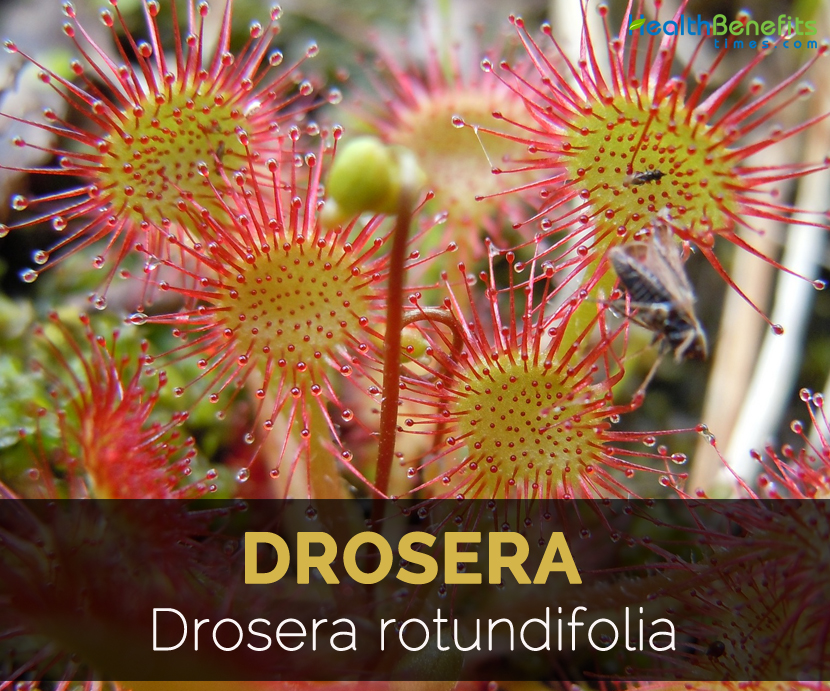| Drosera (Sundew) Quick Facts | |
|---|---|
| Name: | Drosera (Sundew) |
| Scientific Name: | Drosera rotundifolia |
| Origin | It is found in Siberia, Korea, North America, New Guinea and Japan. |
| Colors | Pear-shaped, glossy, tapering tip |
This plant has been using for its aphrodisiac and fortifying effects since long time ago. It is used to treat chest problems, wheezing, ease breathing and respiratory tract. It possesses antibiotic, antibacterial, antitussive, antispasmodic, expectorant and hypoglycaemic activity. This plant could be dried and kept for later use.
Plant
Drosera is a sundew species plant that could be found in marshes, bogs and fens. This plant also grows in rotting logs, swamps and mossy cervices in rocks. It is a perennial plant that has short lives. It could be found in all areas of Northern Europe. The plant is insectivorous as it feed on insects which got attracted to its bright red color. With the use of enzymes the plant dissolve insects that stuck to glandular tentacles and, ammonia as well as other nutrients are extracted from their bodies. Nitrogen which are absorbed by other plants from soil are replaced by ammonia.
Leaves
Its leaves are arranged in basal rosette with 1.3-5.0 cm long petioles that are hairy and narrow which supports laminae of 4-10 mm long. The upper surface secretes sticky mucilage for attracting and entrapping small prey and insects.
Flower and Seeds
The plant bears 5-25 cm high inflorescence with diameter 3-5 cm. On the side of a slender, flowers grow with hairless stalk that emerge from the center of leaf rosette. The flowers have white or pink five petals that produce fruit which consists of slender and tapered seeds of 1.0-1.5 mm in light brown color. The seeds have ellipsoid to globose shape which is extended at each end.
Root
It has shallow root system which measures less than 6 cm or 2.4 inches. The taproot functions for less than a year that got replaced with horizontal adventitious roots that has few hairs.
Traditional uses
- This herb is useful for treating asthma, bronchitis, tracheitis, pertussis and gastric ulceration.
- It eases breathing, relax respiratory tract muscles and provide relief from wheezing.
- It helps to treat chest problems and whooping cough.
- It is an aid for chronic bronchitis, incipient phthisis and asthma.
- Use it externally for treating warts, corns and bunions.
- The juice made from leaves is used to treat corns and warts.
Precautions
- Pregnant and lactation women should avoid using Drosera.
- Allergic people should avoid it.
- Consult by the people with health problems before using Drosera.
- Side effects such as tightness in chest or throat and breathing problems, rash, skin hives and swollen skin might be caused.
References:
https://www.itis.gov/servlet/SingleRpt/SingleRpt?search_topic=TSN&search_value=22017#null
http://davesgarden.com/guides/pf/go/38302/
http://pfaf.org/User/Plant.aspx?LatinName=Drosera+rotundifolia
http://www.floracatalana.net/drosera-rotundifolia-l
http://www.botanical.com/botanical/mgmh/s/sundew99.html
https://www.britannica.com/plant/sundew
http://greatplainsregional.adam.com/content.aspx?productId=48&pid=48&gid=10062
Comments
comments
